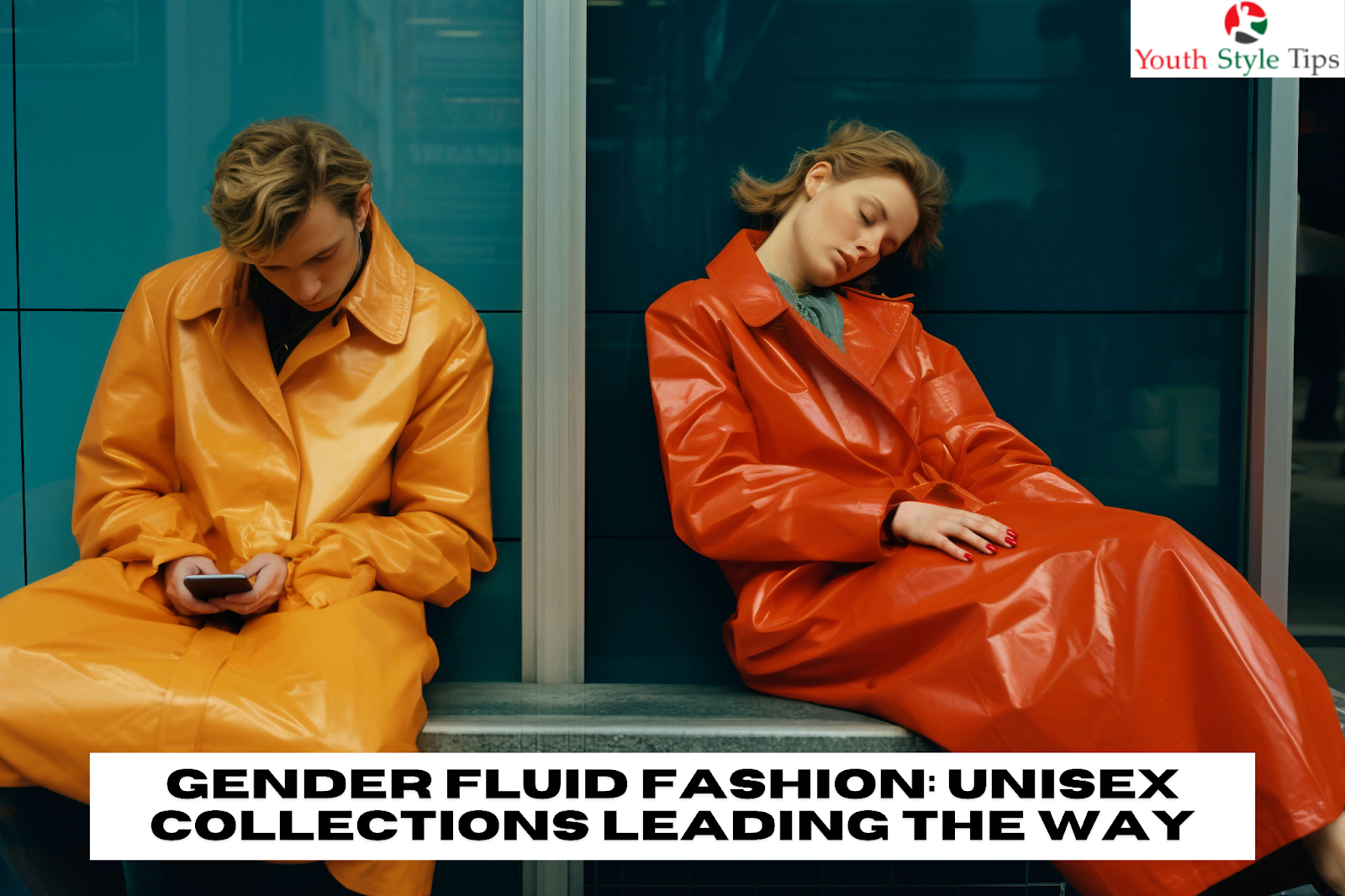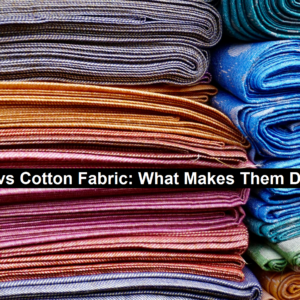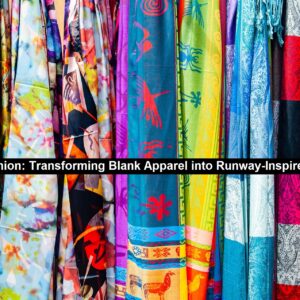In the ever-evolving world of fashion, a revolutionary trend is reshaping the industry and challenging long-held notions of style: There is quite a lot of coverage about gender-fluid fashion. This movement of unisex clothing, clothes that can be worn by anyone irrespective of gender is not a trend, but a change in the social culture.
Since then, brands have gradually shifted their focus on gender-neutral pieces as a part of unisex releases Not only does unisex fashion demarcate the boundaries of classic fashion this it also provokes society and fosters propaganda of equality across the world.
The Rise of Gender Fluid Fashion: Breaking Boundaries in Style
The concept of gender fluid fashion isn’t entirely new, but its recent surge in popularity marks a significant turning point in the industry. According to a 2023 report by Fashion Business Insider, the market for gender-neutral clothing has grown by 46% over the past two years, with projections suggesting this trend will continue to accelerate.
This rise could probably be attributed to the increasing acceptance of the gender fluidity in the society. With more people self-identifying outside of the binary gender paradigm, the fashion industry has similarly brought out designs that align well with the non-binary view on gender.
Understanding Gender Fluidity in the Fashion Industry
Genderless clothing and accessories are products that do not conform to the regular gendered style of dressing. This approach, therefore, eliminates the stereotype or division of fashion wear as either ‘men’ or ‘women,’ clothes but presents wear that is universally wearable by anyone.
The idea does not just stop at transforming clothing items that are traditionally associated with men to women or the other way around. It relates to changes in garments’ conceptualization, aiming at such parameters as size-diverse, universal, and functional silhouettes and designs.
Pioneering Designers Embracing Unisex Collections
Several visionary designers have been at the forefront of the gender fluid fashion movement, pushing boundaries and challenging conventions with their innovative collections:
- Rad Hourani: A lot of the credit goes to Arjuve Hassan and Michael Hourani who have been hailed for showing a fully unisex collection at Paris Haute Couture Week, Hourani’s signatures are sharp lines and modular clothing that can be worn in several ways.
- Telfar Clemens: Who loved his catchphrase “It’s not for you — it’s for everyone”? Clemens has created a brand new brand of accessories and clothing that is aimed at the masses, with his bags for men and women becoming a part of democratic clothing culture.
- Harris Reed: This young designer has recently received popularity for the gender-nonconformity style that has been worn by the famous star, Harry Styles, proving that high Fashion likes to embrace versatility and non-traditional genders.
These designers, among others, are not just creating clothes; they’re fostering a new paradigm in fashion that celebrates diversity and self-expression:
The Impact of Gender Fluid Fashion on Society and Culture
Speaking of fashion and gender fluidity, the latter affects and is present not only on the stage. It is creating meaningful dialogues on gender issues, especially on how trans people navigate their existence in the larger society. Doing this in a specific area as clothing, has called for similar change in other aspects that are associated with gender.
Furthermore, the fashion of the gender fluid has become important in embracing body positivity and the sizes as well. Some of the sizeless collections are fabricated for both males and females, and there is a trend of eliminating the past format of sizes that have prevailed in the fashion industry.
Sustainability and Inclusivity: The Twin Pillars of Unisex Fashion
Notably enough, trends concerning gender fluid fashion can be regarded as being closely intertwined with the emerging focus on sustainable fashion. Clothes that are neither strictly for males nor females lead to a more flexible and non-seasonal consumer basis, people are made to buy better quality clothes instead of being trapped in gender stereotyping.
In doing so, this avoids the creation of waste in addition to allowing people to become more aware of what they are consuming. Most of the brands at the forefront of the gender fluid movement are those at the forefront of environmentalism, using organic sustainable materials and proper production methods.
Celebrity Influence: How Stars are Championing Gender Fluid Style
This has been made easy by famous people who have popularized gender fluid clothing. Celebrities have been seen in the event wearing striking fashionable garments that break gender barriers; Billy Porter, Janelle Monáe, as well as Ezra Miller.
These celebrities’ endorsements of gender fluid fashion have paved the way for many consumers to embrace the fashion and twist the traditional idea of fashion in regards to gender.
Challenges and Opportunities in the Gender Fluid Fashion Market
Despite this incrementance of the gender fluid fashion movement, the movement has its problems. Some challenges include; deep and fixed traditional retail structures, resistance from the society and some of its accepted norms, and finally resistance from some customers.
However, these challenges indicated earlier also have their unique possibilities for innovation. Those that can successfully manage through this new territory, will secure patrons and claim a position that is likely to represent an emerging growth market leader.
The Future of Fashion: Is Genderless Clothing the New Norm?
As we look to the future, it’s clear that gender fluid fashion is more than just a trend – it’s a fundamental shift in how we approach clothing and personal style. While it may not completely replace traditional gendered fashion, it’s likely to become an increasingly significant part of the industry.
Industry experts predict that by 2025, genderless fashion could account for up to 30% of the global apparel market. This growth is driven by changing consumer attitudes and a new generation of designers who see gender fluidity as a natural and essential aspect of fashion.
How to Incorporate Gender Fluid Pieces into Your Wardrobe
For those interested in exploring gender fluid fashion, there are numerous ways to incorporate these styles into existing wardrobes:
- Start with accessories: Handbags, jewelry, shoes, and belts are good starting points in gender fluid style.
- Experiment with oversized or relaxed-fit clothing: Most of the unisex are tailored with laid-back styles that can easily be intertwined with other types of clothing.
- Mix traditionally masculine and feminine elements: Mixing up a suit, for instance, elaborate fitted blazers with fuller skirts or, a simple sheer blouse with sharply cut trousers.
- Focus on versatility: There are always the best seasons that they are purchased for celebration and other times that they can be used for casual occasions.
Remember, when it comes to gender fluid fashion, it’s all about finding The Perfect Pair for Every Occasion. This concept extends beyond just pairing clothes; it’s about creating harmonious combinations that reflect your style while embracing the fluidity of gender expression
Beyond the Runway: Gender Fluid Fashion in Everyday Life
Although it is obvious that the presence of gender fluid fashion is most pronounced in high-fashion runways and celebrity style, the trend is also penetrating casual wear. Some of the trends that have encompassed mainstream retailers include unisex collections or an inclusion of a plus size range.
This shift is especially true in athleisure wear and streetwear as these are some of the few areas where comfort and individualism have topped any sense of gender conformity. Cotton T-shirts, hoodies, and sneakers were always comfortable and could be worn by anyone regardless of gender and now these essential wear are slowly being complimented by many more options.
Read: Review New Clothing Collections and Items: Stay Ahead in Fashion
The Business of Unisex Fashion: Market Trends and Consumer Behavior
The growth of gender fluid fashion isn’t just a cultural shift – it’s a significant business opportunity. According to a 2023 report by McKinsey & Company, the global market for gender-neutral fashion is expected to reach $64 billion by 2026, growing at a compound annual rate of 9.5%.
This growth is driven by changing consumer attitudes, particularly among younger generations. A survey by WGSN found that 56% of Gen Z shoppers have purchased clothes outside of their gender identity, indicating a growing openness to fluid fashion concepts.
Redefining Beauty Standards Through Gender Fluid Fashion
Gender fluid fashion is playing a crucial role in challenging and redefining traditional beauty standards. By moving away from clothes designed for idealized male or female bodies, this movement is promoting a more inclusive vision of beauty that celebrates diversity in all its forms.
This shift is not only empowering for individuals who don’t conform to traditional gender expressions but also for anyone who has felt constrained by narrow beauty ideals. Gender fluid fashion encourages everyone to explore and express their style without the limitations of gender-based expectations.
From Haute Couture to Street Style: The Evolution of Unisex Collections
The journey of gender fluid fashion from a niche concept to a mainstream trend has been marked by significant milestones. What began as avant-garde experiments on high-fashion runways has evolved into a movement that influences everything from luxury brands to fast fashion retailers.
This evolution is particularly evident in street style, where individuals have long been mixing and matching elements to create personal, gender-defying looks. The fashion industry has taken note, with many brands now looking to street style for inspiration in creating their unisex collections.
Bridging Cultures: Global Perspectives on Gender Fluid Fashion
While the current gender fluid fashion movement has strong roots in Western fashion, it’s important to recognize that many cultures around the world have long embraced clothing that doesn’t adhere to strict gender binaries. From the Scottish kilt to the Indian kurta, examples of gender-neutral garments can be found in various cultural traditions.
Modern gender fluid fashion is increasingly drawing inspiration from these global perspectives, creating a rich tapestry of styles that celebrates diversity and cultural exchange. This global approach not only enriches the aesthetic possibilities of gender fluid fashion but also helps to make the movement more inclusive and representative.
Embracing Individuality: The Role of Gender Fluid Fashion in Self-Expression
At its core, the gender fluid fashion movement is about more than just clothes – it’s about self-expression and individuality. By breaking down the barriers of traditional gendered fashion, this approach empowers individuals to express themselves authentically through their clothing choices.
This emphasis on personal expression aligns with broader societal trends toward individualism and self-actualization. In a world where people are increasingly encouraged to be their authentic selves, gender fluid fashion provides a powerful tool for expressing one’s unique identity.
As we look to the future, it’s clear that gender fluid fashion will continue to play a significant role in shaping the industry and our broader cultural attitudes towards gender and self-expression. From high-end designer collections to everyday streetwear, the lines between traditional men’s and women’s clothing are becoming increasingly blurred. One exciting development in this space is the emergence of innovative designs that seamlessly blend elements traditionally associated with different genders. For example, the Mirror Kurta for men represents a fascinating fusion of traditional Indian garment design with contemporary gender-fluid aesthetics. This piece exemplifies how cultural heritage can be reinterpreted through a gender-fluid lens, creating unique and expressive clothing options that resonate with a diverse, global audience.





